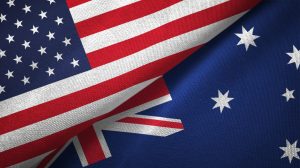As China looms over foreign policy in Canberra and Washington, policymakers in each capital know the mutual benefits of military cooperation in the Pacific. While such collaboration gives the allies a more assertive security posture in the region, it also costs them the trust of critical Indo-Pacific countries. If Australia and the United States genuinely desire a peaceful Pacific, they must be equally enthusiastic about partnership in another mutually beneficial field: international development.
Australia’s strategic location and the United States’ expertise make the countries natural partners in security and development. While policymakers in Australia have been eager to reap the benefits of being allied with the world’s largest military, they have been slower to engage the world’s largest international donor. At the same time, the United States military chases the benefits of Australia’s location and regional expertise, but its development community fails to capture the same opportunity.
While cooperation in each field is mutually beneficial, militarism comes at a severe price. Nuclear-powered submarines acquired through AUKUS and the plan to deploy nuclear-capable bombers to northern Australia have raised questions about the two countries’ dedication to stopping nuclear weapon proliferation. Indonesia and Malaysia both repudiated AUKUS for its potential to trigger nuclear proliferation and destabilize the Indo-Pacific. The prime ministers of the Cook Islands and Kiribati also spoke out against the agreement’s potential to escalate militarism in the region. In addition, Australia is the only Asian country in the Anglophone alliance, allowing China to frame rising tensions in terms of colonial powers re-asserting control.
For Pacific countries, there are serious reasons to doubt the sincerity of the allies’ dedication to democracy and stability beyond their borders, especially in the case of the United States. The superpower’s occupation and militarization of Guam and American Samoa have long stained the country’s reputation in Asia. As the United States expands its military footprint with new missile defense systems and troop deployments on Guam, which is 27 percent covered by military bases, local leaders go unheard and fear locals will pay the ultimate price if tensions boil over in the region. Even if other countries no longer fear colonial occupation, the idea that their citizens’ lives are worth less than American geopolitical objectives will not make for a welcoming region.
Meanwhile, leaders in Canberra and Washington have not been able to match their enthusiasm for military projects with similar initiatives that promote the well-being of the inhabitants of the Indo-Pacific. A memorandum of understanding signed by the United States Agency for International Development and the Australian Department of Foreign Affairs and Trade demonstrates that the countries know the strategic benefits of cooperation. Nevertheless, in the words of Australian Minister of Defense Richard Marles, “There’s not the same kind of deep, organic interoperability [for development] as there is in other areas, such as defense.” Busy troubleshooting security, Australia and the United States failed to build similar mechanisms for development.
Nevertheless, deep military cooperation between the countries can provide the foundation for greater development cooperation. For example, military personnel exchanges are a common practice credited with strengthening the Australia-United States alliance that could be replicated between the United States Agency for International Development (USAID) and the Department of Foreign Affairs and Trade Development, Multilateral and Europe Group (DFAT DME). Additionally, top diplomatic and defense officials meet yearly at the Australia-United States Ministerial Consultations (AUSMIN). Inviting the USAID administrator and the DFAT deputy secretary for DME to participate in AUSMIN would send the message that the countries are as earnestly dedicated to development as they are to security.
The development community also stands to benefit from the Quadrilateral Security Dialogue between the United States, Australia, Japan, and India, which is becoming less limited to “security” as it matures. When the COVID-19 pandemic hit, the Quad distributed vaccines through the Indo-Pacific, and the May 2023 Quad Leader’s Summit resulted in projects that will help build infrastructure, health, and climate capacity across the region. A Quad that is dedicated to improving well-being in the Indo-Pacific has far more potential than an Australian-American partnership does alone, as Japan and India are both global development leaders with their own sets of expertise. Their presence would also eliminate the colonial narratives that follow Anglophone groupings.
While Washington and Canberra are enthusiastically pursuing a military relationship in the Indo-Pacific, it would be wise to consider diverse ways to engage the region, including through development initiatives. The development communities in each country should see each other as natural allies and work with other regional partners to create a dynamic and reliable development system in the region. Although each community may be dispirited by their respective government’s military-first approach to the Indo-Pacific, the region’s geopolitical importance is an opportunity to bring positive outcomes to its people.

































